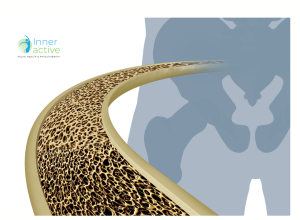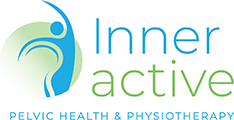
Do you suffer from osteoporosis or osteopenia?
Exercise is a CRITICAL component in building and maintaining strong bones. Recent clinical studies have uncovered a powerful combination of exercises that can help keep your bones healthy. These exercises include jogging, stair climbing, skipping, step aerobics, dancing and more, combined with progressive resistance training. This combination is particularly effective in maintaining the health of both hips and spine, which are common areas affected by osteoporosis and osteopenia (Zhao et al, 2017) in postmenopausal women.
Progressive resistance training is KEY to building strong bones. This type of training involves gradually increasing resistance over time, with proper technique and modifications as needed, with the goal of reaching 80–85% of your 1 repetition maximum (RM) (Beck et al., 2016). When training at a specific RM load, it’s recommended to increase the load by 2-10% when you can perform the current workload with 1-2 reps more than your target on two consecutive training sessions.
The cost of osteoporosis and fractures in Victoria was staggering in 2017, with $589 million in expenses. Of this cost, 26% was attributed to individuals aged 50-69, while 74% was attributed to individuals over the age of 70, with more than two-thirds being women (Tatangelo et al., 2019). In 2017-2018, there were 93,321 hospitalizations for minimal trauma fractures, including hip fractures, which are one of the most debilitating and serious outcomes of osteoporosis (Ip et al., 2010). These fractures place a significant burden on individuals, communities and the entire Australian healthcare system (AIHW, 2020).
However, there is hope! Proactively engaging in appropriate exercise to maintain bone health can greatly impact outcomes and quality of life in the long run (Zhao, 2017). In fact, progressive resistance training for the lower limbs, including exercises such as weighted squats, hack squats, leg press, hip extension, and hip adduction, was deemed the most effective type of exercise intervention in reducing bone mineral density in the neck of the femur according to Canada’s “Too Fit to Fracture” expert panel (Giangregorio et al., 2014). The supervision and guidance of a healthcare professional, such as a physiotherapist, will ensure that your exercises are both effective and safe in maintaining your bone health. Here are some examples of how our physiotherapists at Inner Active Pelvic Health and Physiotherapy can help you maintain or improve your bone health:
- Prescribing balance and coordination training exercises: Improving balance and coordination through physiotherapy can help prevent falls and fractures, which are common in people with osteoporosis. We can help design an individualized balance and coordination training programs that challenges you and aims to improve your stability and mobility.
- Weight-bearing Exercises: Weight-bearing exercises such as walking, jogging, and stair climbing can help stimulate bone growth and maintain bone density. By teaching you how to perform these exercises correctly so that you can get the maximum benefit for your bone health.
- Proprioception /body awareness and posture training: Poor posture and body mechanics can put extra stress on bones, leading to fractures and other problems. By providing assistance with posture and body awareness, this helps to reduce the risk of injury and promote healthy bones.
- Fall Prevention: Falls are a major cause of fractures in older adults and people with osteoporosis. We are well positioned to help identify and address underlying causes of falls, such as balance and coordination problems, weakness, and gait disturbances. We can provide you with fall prevention strategies and exercises to reduce your risk of falling.
- Education and Support: By providing clients with education and support on maintaining good bone health, including information on proper nutrition, lifestyle habits, and the importance of regular physical activity can have an important role. We can also provide guidance and support to help clients stick to their physical and health goals.
If you are seeking more information on how physiotherapy can help with your with bone health, do not hesitate to reach out. Contact us. We provide a detailed assessment to identify an individual’s unique needs and develop a customized treatment plan to help them achieve and maintain strong, healthy bones.
By Min Khoo (she/her)
Musculosketetal and Women’s Health Physiotherapist
References
Beck, T. W., Leuning, R., Rah, J. H., & Bemben, M. G. (2016). Resistance training intensity, volume, and bone mineral density in postmenopausal women. Journal of Strength and Conditioning Research, 30(3), 816-823.
Benetti, F., Alves, C., Gomes, D., Vieira, E. L., & Gobbi, S. (2018). The effects of progressive resistance training on hip and lumbar spine bone mineral density in postmenopausal women: A systematic review. Maturitas, 108, 46-54.
Giangregorio, L. M., Whiting, S. J., & Petrella, R. J. (2014). The effect of exercise on hip bone density in postmenopausal women: a systematic review. Osteoporosis International, 25(3), 703-717.
Ip, J. H., Kendrick, D., Al-Janabi, N., Kelly, P. J., Darzins, P., & Jones, G. (2010). The economic burden of hip fractures in Australia. Osteoporosis International, 21(2), 255-260.
Tatangelo, G. D., & Petrella, R. J. (2019). The cost of osteoporosis and fractures in Victoria, Australia. Osteoporosis International, 30(3), 411-417.
Zhao, Y. (2017). Exercise for maintaining bone health in postmenopausal women: a review of randomized controlled trials. Journal of Women’s Health Physical Therapy, 41(1), 20-27
